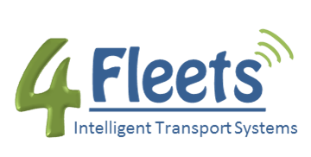Innovation in fleet monitoring systems: the TiGR protocol

10 questions and answers about the protocol
1. What is it?
The TiGR protocol is the new industry standard for communication between vehicles and fleet monitoring centers. (Telediagnostic for Intelligent Garage in Real-time)
2. Who developed it?
The protocol was originally defined and tested in the European project EBSF2. The protocol was then consolidated and standardized by the International Association ITxPT, which includes the main bus manufacturers worldwide.
3. What is it used for?
The protocol addresses the need of transport operators to have a centralized and interoperable telediagnostics and fleet monitoring platform, independent of vehicle suppliers and onboard equipment, and applicable to any vehicle.
4. What advantages does it offer?
The advantages are numerous: vehicles can be equipped at the factory with chosen and manufacturer-guaranteed onboard equipment; no need for retrofit interventions on vehicles already in operation; users access data from all vehicles through a single platform chosen by the transport company and independent of the vehicle manufacturer; data is coded uniformly regardless of the vehicle make and model; services provided by the platform (e.g., data validation algorithms, real-time alarm notifications, automatic reports, statistics, etc.) are automatically available uniformly for all connected fleet vehicles.
5. Does standardization limit the quantity/quality of available data?
No, the protocol is structured to handle all available diagnostic data onboard, even the most detailed ones (DTCs)
6. Is the protocol publicly available?
Yes, the document is freely downloadable from the ITxPT website https://itxpt.org/
7. Is the ITxPT document exhaustive?
No, the document describes the data format and communication rules at the implementation level. The document also specifies the presence of some mandatory data ('mandatory'), but leaves to subsequent clarifications by the user for the selection of planned but non-mandatory data ('recommended')
8. Is the protocol only usable for telediagnostics?
No, the structure is flexible and can be easily enriched with additional data for other needs, such as consumption monitoring, driving style, load detection, and passenger counting.
9. Is the protocol applicable also to energy transition vehicles?
Yes, the protocol has already been integrated with specific data for gas, hybrid, full electric, and hydrogen vehicles.
10. What do I need to do to ensure proper preparation of my vehicles with the TiGR protocol?
Two steps are required: the drafting of the technical supply specification must include, in addition to the TiGR requirement, a document of detailed technical specifications based on company goals; at delivery, it is necessary to carefully verify compliance with the requirements of the specification both of the implemented implementation and of the provided documentation. This check must be carried out as soon as possible, as it becomes very difficult and costly to resolve any discrepancies once the vehicles have been accepted and put into service



